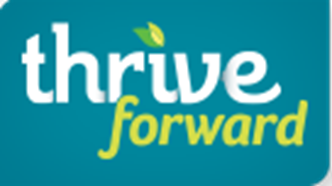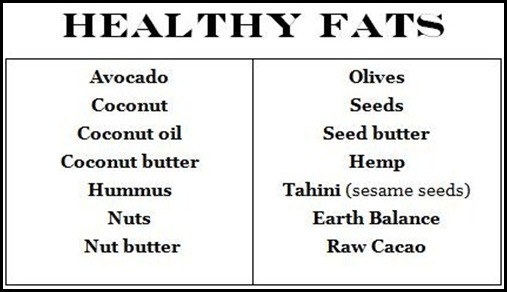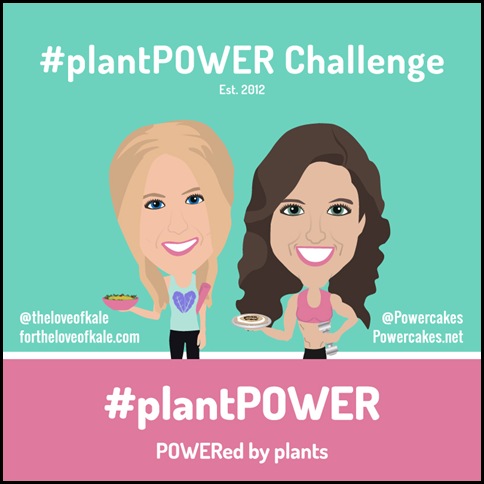Let’s Talk Fat – Guest Post By an RD2B Emily
January 24, 2013 -
9 comments, add yours
Hey all! Thank you SO much for your kind words & support with sharing my deeper story of change.
It’s not always easy to come out & reveal internal struggles, but once you do – it’s like the weight is off of your shoulders.
I have a few more things to share with you in the next couple of days so keep an eye out for that!
With starting a new year, having a new business, & moving forward with new “changes” in my life –
I still struggle with certain feelings but have come so far!
I have faith that I am on the path I am meant to be on & nothing can get in my way.
Today I wanted to switch gears for a day & share with you a few Guest Posts!
First, some of you may be following the Thrive Forward movement with VEGA.
they recently posted about Fad Diets & it was a great read! You can check it out here!
Also, my girl from Beyond Fit Physiques did an interview with me & she shared it here!
Now onto the guest post here today, my good friend Emily is a student at the University of Pittsburgh and she is an RD to be!
Which I know a lot of my bloggers are also on that path. Emily needs to do certain projects in order to graduate & I couldn’t wait to help her any way I could! We discussed different ways for her to contribute her experiences and a GUEST POST was what we came up with! She is so intelligent and I couldn’t wait for her to share some of her studies.
Today she shares information all about FAT!
I’ve talked about fat before & how it shouldn’t be feared here & on this VLOG
“Don’t Fear The Fat” VLOG
Now a little bit about Emily…
___________________________________________________________________________________
Emily is 23, attending the University of Pittsburgh, and aspiring to become a registered dietician. Her love of nutrition grew from the choice to live a happier, healthier lifestyle after spending almost all of her childhood, adolescence and early adulthood fighting depression and obesity. She is in the process of applying to Pitt’s Clinical Dietetics and Nutrition program for the fall of 2013. Her goals for 2013 are acceptance into the UPitt program, and completion of the Insanity program (by Beachbody). By the end of 2014, she hopes to be a certified personal trainer and pursuing a graduate degree in Physician Assistant studies. Emily plans to use both degrees working in a childhood obesity clinic to help children who struggle with weight and obesity problems strive for a healthier future.
___________________________________________________________________________________
Let’s Talk Fat:
So why does Kasey always say “Don’t fear the fat”? We’re predisposed to the idea that fat is bad for us, and to limit it and replace it with “fat-free” and “light” options, but really, fat does more for the body than most people realize. It performs countless tasks in the body and gives us an important source of energy, not to mention composes some of our most vital organs. Hint: you probably wouldn’t be able to read this (or anything) without some fat in your body: your BRAIN!
So… What is it?
Fats, or lipids, are water insoluble organic molecules, composed of a majority of carbon atoms attached to hydrogen and oxygen atoms. They’re packed closely together (giving it the density it’s well known for). There are three types: triglycerides, phospholipids, and sterols. Because approximately 95% of our fat intake is in the form of triglycerides, we’ll put our focus there. It consists of 3 (tri-) fatty acids attached to a 3 Carbon glycerol (-glyceride). Triglycerides are long chains of carbon atoms bound to each other and hydrogen atoms. Their length affects the function and absorption: short and medium chains (fewer than 12 Carbon atoms in a chain) are absorbed and transported much more readily than are long chains.
Saturation also determines function: when I say saturated, I’m referring to how many double bonds carbon makes with other carbons in the same chain. If there are none, it is considered “saturated” because it is attached to the maximum amount of hydrogen possible. Saturated fats, as a general rule, tend to come from animal sources like butter, cream, whole milk and beef, but also include coconut and palm kernel oil. They are usually solid at room temperature. Some types are healthier than others – think coconut oil – but you still want to limit your intake to less than 10% of your total energy intake. If something is “monounsaturated” there is one double carbon-carbon bond present. These are typically from plant sources: olive oil, canola oil, and cashew nuts, and are generally liquids at room temperature. If it is “polyunsaturated”… you guessed it: two or more double bonds! Cottonseed, canola, corn and safflower oils are good examples, and are also liquids at room temperature.
What’s all this talk about trans fatty acids, anyway? A hot topic in the industry these days, this type of fat is mainly manipulated by food manufacturers in a process called hydrogenation, when hydrogen molecules are pressurized and added directly to unsaturated fatty acids. This technique was developed in the early 1900s to help prevent spoilage of oils and to create an oil that would be more firm at room temperature. These types of fats very rarely occur in nature and are generally thought to be more harmful to health than consuming saturated fats. Not only do they raise “bad” cholesterol, they have the extra effect of actually lowering the “good” cholesterol! While there has been a push for the ban of trans fat use, the FDA now only requires that they be labeled. These fats are very common in highly processed foods, and can often be hidden! The FDA allows products having less than 1 gram of trans fats to be labeled “trans-fat free”. This is where it’s important to read labels: “partially hydrogenated” is a key hint as to whether trans fats are hidden. Even if it says 0 grams, there’s still a chance you’re consuming these nasty little buggers.
Check out how New York City has taken some positive steps to ban trans fat use in restaurants and other food establishments in a recently passed health code!
Hear some more on the debate of trans fats being used in place of saturated, as the US starts moving back toward the use of saturated fats for several reasons:
Omega-3 and Omega-6 Fatty acids: what does that even mean? The name of these important fatty acids indicates the location of the carbon to carbon double bond in relation to the omega (end) of the chain. The body is unable to place double bonds before the 9th carbon during synthesis, so these fats really are vital to a healthful diet! They are “pre-cursers”, that is, they’re required for the indirect maintenance of cellular function, gastrointestinal motility, blood clotting, blood pressure and other really important functions! Omega-6 fatty acids are also referred to as linoleic acids and include vegetable and nut oils. These sources are fairly common to the American diet and it is usual for most people to consume enough of them. Omega-3 acids on the other hand, are found mainly in dark, leafy vegetables, flaxseeds, soybeans, walnuts and their oils, as well as canola oil. Research indicates that fish, such as salmon, high in Omega-3’s are involved in reducing an individual’s risk for heart disease. If you’re looking to increase your consumption of the “omegas”, sprinkling ground flaxseed on your veggies, or adding walnuts to your meals can really do the trick!
So what does fat do for you?
The primary source of energy for your body is fat (particularly during times of rest or low intensity exercise), contributing more than twice the amount of energy (Calories) as does carbohydrate and protein. Your cells need oxygen to burn fat for energy, and during resting periods, your cells have the proper amount of oxygen delivered to them. 30-70% of the energy used at rest by muscles and organs comes from fat, depending on your level of fitness. The more physically fit you are, the better your delivery of oxygen, which means you are able to use fat for energy for longer periods of time, giving yourself a higher stamina and increased output.
Fat is needed as a stored energy source for times when we are unable to eat. There is very little carbohydrate storage in the body (only enough to last about 1-2 days!), and no place to store extra protein (nope – your muscles don’t store protein).
It is also necessary for the transport of fat-soluble vitamins, which include Vitamins A, D, E and K: essential for vision, bone, and blood health! Without fat, you likely wouldn’t be able to see this at all!
Many cellular functions require the use of lipids to maintain integrity: cellular membranes, transportation, and fluidity (for instance – the reason why your red blood cells can bend and squeeze through the smallest capillaries in your body, delivering oxygen to all your muscles!). Polyunsaturated fats are primary components of the tissues of the nervous system, like your brain and spinal cord – and who would you be without those?!
Your internal organs require a layer of fat for protection from injury, as well as insulation.
A lot of people consider body fat to be a bad thing,
but it is an absolutely indispensible part of maintaining your body’s functioning and health.
How do we process and store fats?
Being a macronutrient, and a dense one at that, lipids require lots of work to be broken down and transported into the blood stream. The main part of absorption occurs in the small intestine, after it has been broken into smaller “droplets” by stomach acid and the bile excreted from your gall bladder. Lipoproteins (fat + protein) essentially “wrap around” the fat droplets, allowing them to now be considered water soluble and transportable in the blood. They travel through the lymphatic system and into the blood, where they are then either used for energy or stored for later use. If you’re athletic, your body’s first stop for storage is muscle tissue – you can store it in its already broken down forms, which are an immediate source of energy for your muscles (athletes are capable of storing more lipids in their muscle tissues than non-athletes). From there, it can also be stored in the body’s adipose tissue, but it is re-created into its whole triglyceride piece-by-piece. When you need this fat for energy, your body must then break it down and transport it again.
The suggested intake of fat is approximately 20-35% of your total daily intake of energy. Consuming any less than 20% fat is considered to be more harmful than good, because it lowers the chance of receiving the proper amounts of protein and essential vitamins and minerals from some of our very nutritious higher-fat foods! Consuming more than 35% from fat is indicative of an increased risk for certain chronic diseases like heart disease and high blood pressure.
So what are some good sources of fats?
Plant products provide a great source of unsaturated fat, like avocados, olives, nuts and seeds.
___________________________________________________________________________________
We all know I love my healthy fats & I’m so glad Emily explained what FAT really is!
You know that Heather & I love our #plantPOWER FATS!
Which you will be seeing a lot of in the February CHALLENGE!
Did this article help you understand FAT?
Do you fear the fat or do you embrace it?
I know it’s hard to get over that fear – but as you see in my vlog,
I challenged myself to up my healthy fats and it really helped me!
I did not gain weight and if anything, my body felt so much better!
Thank you Emily for all of your information!



![clip_image002[4] clip_image002[4]](https://www.powercakes.net/wp-content/uploads/2013/01/clip_image0024_thumb.png)

